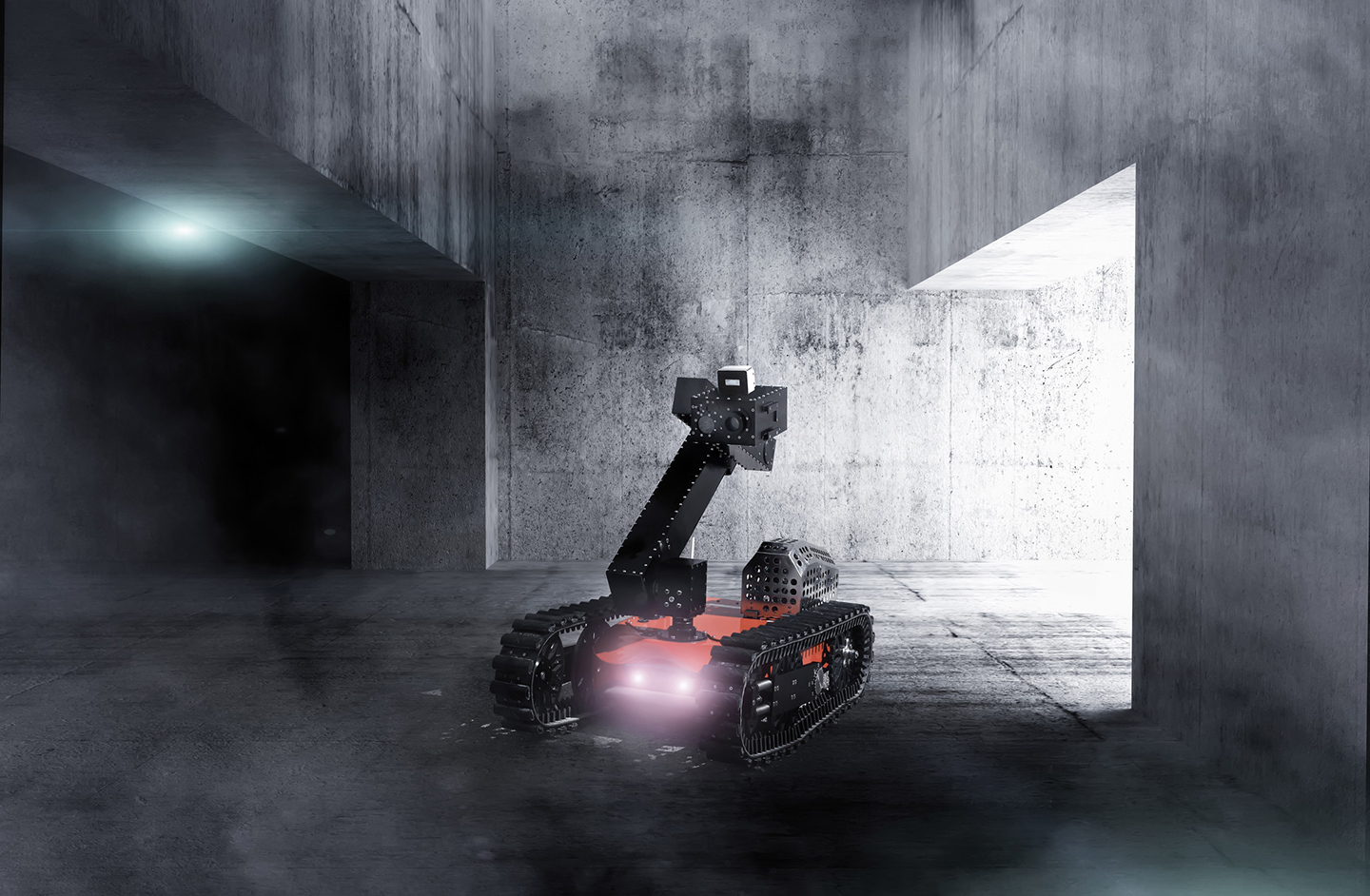Radar Provides Robotics with Visibility
With its radar-on-chip technology, Fraunhofer FHR has now opened up the advantages of radar for use in robotics as well, proving this with the EU project Smokebot. This project, conducted by international partners from research and industry as well as future users, developed a mobile robot capable of providing valuable information to emergency forces by remote control or even semiautonomously. For this, Fraunhofer FHR supplied the small radar modules, which are highly efficient in terms of energy consumption and data volumes, allowing for high-resolution 3D obstacle detection even in poor visibility. The Smokebot prototype will be tested under real operating conditions in the fire exercise building of the Dortmund fire department at the end of June 2018.


The mobile robot is designed to support emergency forces such as the police or the fire department, for example during large fires, so that in the future they do not have to expose themselves to danger. This was the objective of the Smokebot research project funded within the European Union’s “Horizon 2020” program. The robot is to provide the head of operations with all necessary information to assess and cope with the situation, even in a chaotic environment and under harsh conditions. To achieve this, the project partners equipped the robot with a unique combination of radar, cameras, laser scanners, and gas detectors, integrating these components into a single mobile overall system. In addition, the consolidated data from all sensors can be matched with emergency plans and maps, providing the emergency team in a safe distance with a detailed picture of the situation.
Where optical systems reach their limits, radar reliably detects objects or people in its surroundings even under harsh conditions of smoke, fog, dust, or rain. Therefore radar is predestined for this purpose. To put this to use in robotics, the engineers at Fraunhofer FHR have developed a 3D obstacle detection MIMO radar module with a size of only 25 cm and a weight of a few 100 grams. Even with these compact measurements, the highly integrated silicon-germanium-based chip technology allows for a very high resolution at an operating frequency of 120 GHz. For this, the scientists significantly improved the integration process for the radar chip even further. This way it was possible to include both the signal generation as well as the data collection in a single module capable of transmitting all measurement data via a standard Ethernet interface. The downstream processing then makes it possible to reconstruct the obtained image information in 3D, enabling mobile robots to localize obstacles in the area in front of them in three dimensions.
The created Smokebot demonstrator will be tested under real operating conditions in a fire exercise building in the training area of the Dortmund fire department at the completion of the project on June 29. The test will be carried out by the project partners which, besides Fraunhofer FHR, also include the Dortmund fire department, the Leibniz University of Hanover, and other universities and industry partners from Germany, Austria, Sweden, and the United Kingdom. The joint research is being led by Prof. Dr. Achim Lilienthal of Örebru University, Sweden.
Fraunhofer FHR’s very compact radar modules only require very little power. Thus, in addition to the Smokebot, they can also be installed on other small carriers or even drones, for example to carry out exploration tasks. The three-dimensional detection and tracking of objects or people by radar is particularly well suited for security tasks, for instance as intelligent alarm systems, for machine safety, or for autonomous driving.